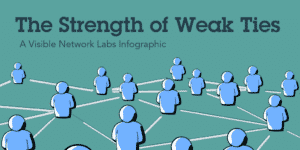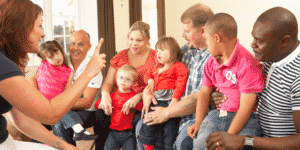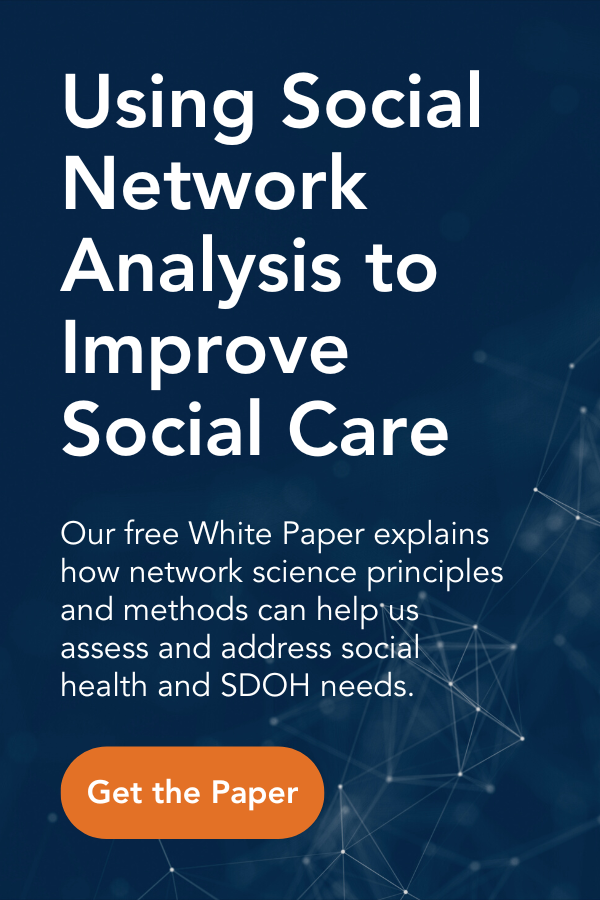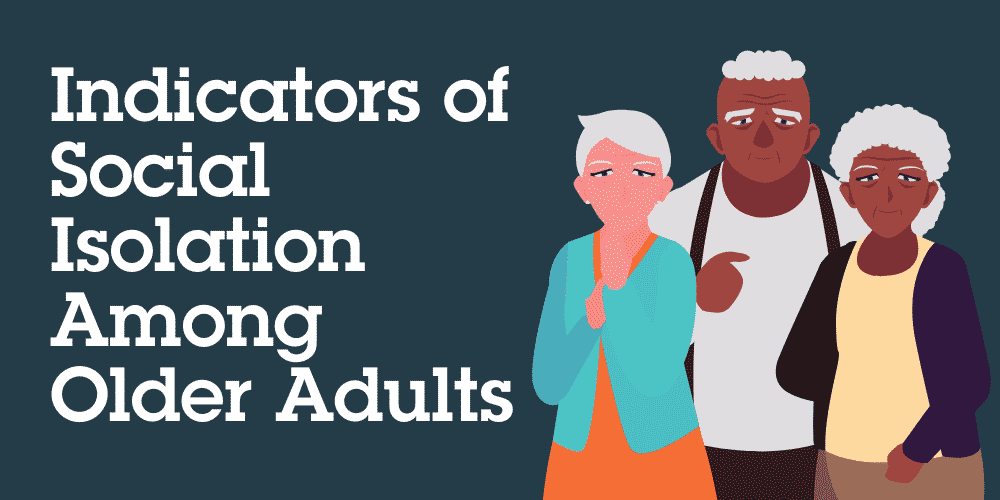
Indicators of Social Isolation Among Older Adults
Many studies suggest that older adults face a higher risk of social isolation and loneliness than the average American. This is due to several reasons, including a greater likelihood of losing a spouse or significant other, physical isolation in a care home, and a reduction in the average size of their social support networks. As isolation is associated with increased health problems, worsening outcomes, and a generally poor quality of life, identifying those at risk of being isolated is especially important to allow interventions to occur.
However, despite the importance of social connectedness, very little work has been done to make it easy to measure it in the field. In their 2009 paper, Cornwell and Waite pinpoint nine different indicators that may be used to identify socially isolated or lonely older adults. The indicators each measure slightly different dimensions of social connectedness and each is best used for certain situations.
The most robust process for identifying social isolation is to combine some of these indicators to create an overall social connectedness or isolation score. This can help providers intervene in cases where an individual has high-risk scores to help connect them to resources and re-integrate them into the community. Check out the full infographic below with all nine indicators of social isolation.
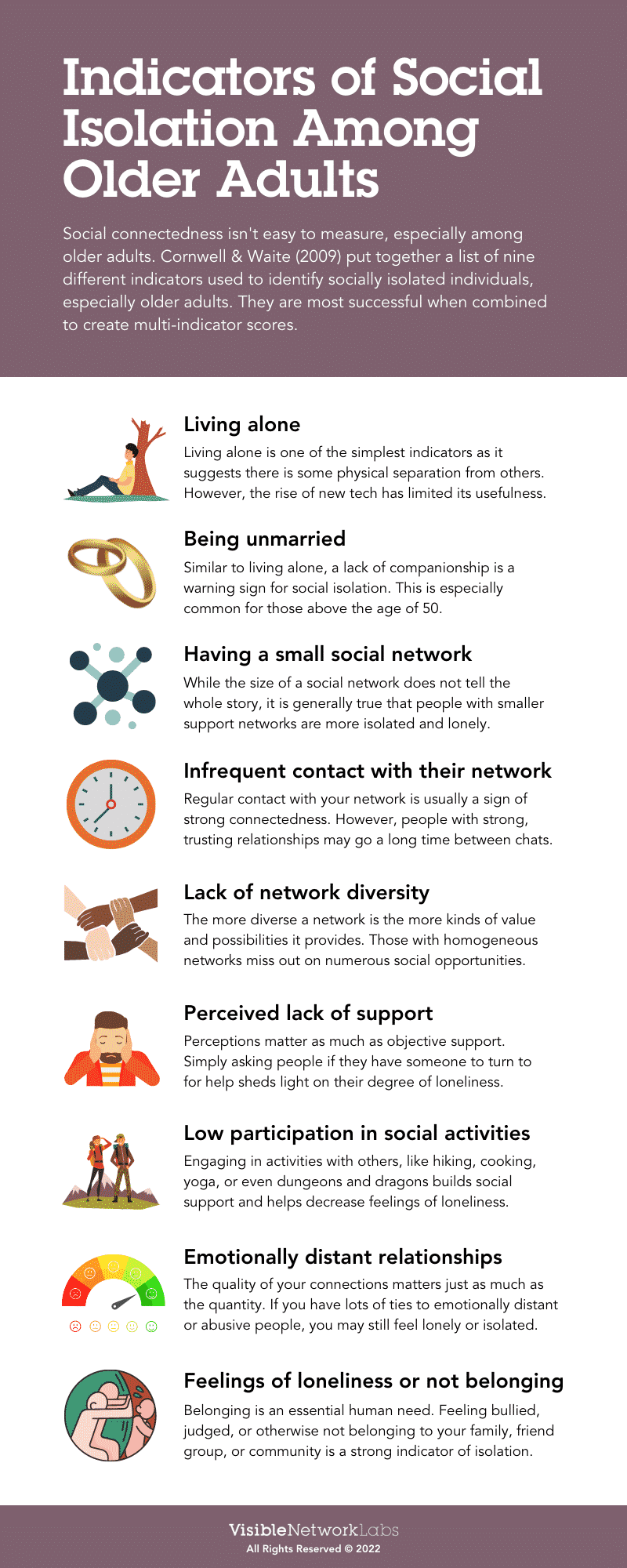
Collecting social isolation indicator data helps at the individual and population level. Providers and clinicians can use the results to guide their conversations with patients and clients and refer them to resources or activities that might be able to help. At the systems-level this data provides invaluable population-level perspectives on the status of social connectedness and isolation across the community.
Here at Visible Network Labs, we are developing our own scales and scoring system for social isolation and connectedness using many of these same indicators. The score is built into PARTNERme, our person-based network tool for measuring and mapping personal support networks. You can learn more about our connectedness scale here, or learn more about PARTNERme here.
|
|
Thank you for Signing Up |

More Social Care Resources

